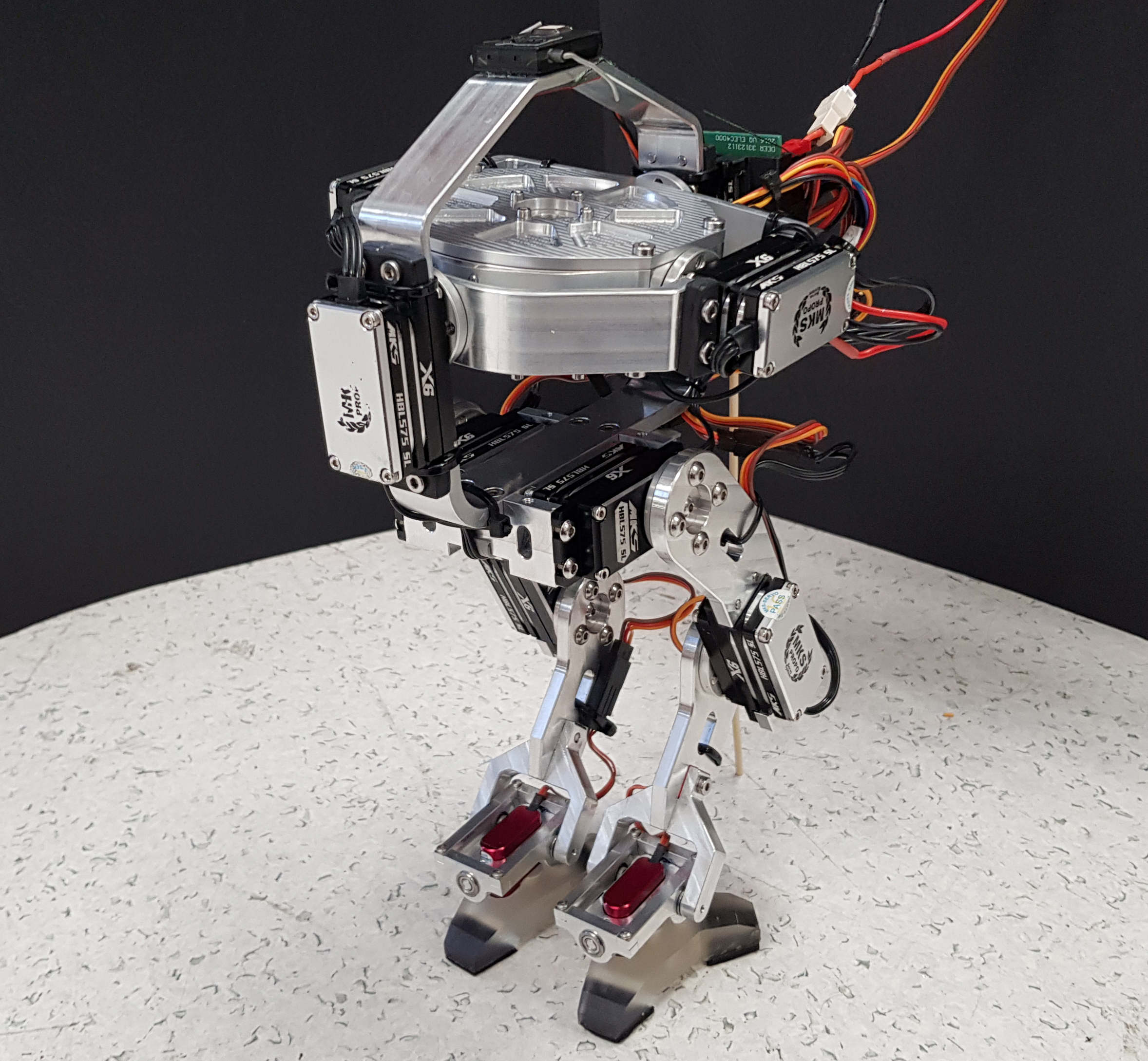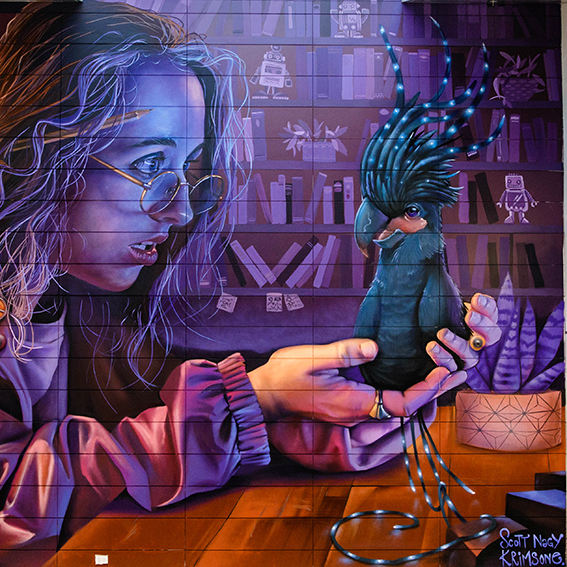Robotics
Robots are more than just a sensor, or an algorithm, or an actuator: they are complex electromechanical devices with sophisticated interactions not just between the robot and its environment, but between parts of the robot itself.
Robotic Design
The Robotics Design Lab (RDL) takes a holistic approach to developing robotic systems, which considers all of the systems of a robot concurrently to find innovative solutions to difficult design challenges.
The RDL consists of academics and technical staff with broad skill sets within engineering and special expertise in control, propulsion and construction of unmanned aerial vehicles, and growing strength in legged locomotion.

Social Robotics
Robots are beginning to deliver pizza and parcels, drive cars and help kids with their homework. How will they communicate with us? How will they interact with us? Our social robotics projects are thinking about how to design and engineer social robots by understanding human-robot interaction and answering questions like: What are the features of good social interaction? What are the effects of social robots on transfer of learning? Can robots learn, use and share language?

Dr Ola Olsson is researching the iRat and social robotics at UQ
Robotic Design Projects - Robotics Design Lab - Associate Professor Pauline Pounds
- TAS DCRC Fellowship on Embodied Drone Intelligence
This project involves exploring robotic whisker technology we originally developed in 2016, and finding ways of using them to allow drones to fly through interior spaces and around objects and obstacles without needing to use heavy cameras or complex, expensive lidar systems - Tiny Giant Robot CMG Biped
Dynamic walking robots are capable of incredible versatility and can traverse broken and uneven ground unpassable by wheeled or tracked robots. However, they are also incredibly expensive. Our approach instead employs actively controlled gyroscopes on articulated gimbals to provide stability, greatly reducing the cost of onboard systems. - Low-cost Disposable Drones
Drones are increasingly affordable, but still remain too expensive for applications where they may be destroyed or irretrievable after a missing. This project is building extremely simple drones out of cheap, biodegradable material so that they can be discarded after use, without negative impact on the environment. - Advanced Drone Sensors
Gusts, fog and smoke all pose navigation hazards to drones flying around structures outdoors. We are developing new generations of sensor technology to give our drones the input they need to confidently stay on course even in the worst weather conditions. - Novel Drone Design
Typical drones are now very capable platforms, but there are many more useful and valuable missions that could be undertaken with longer endurance, larger payload capacity, and extended capabilities. Our lab is building drones with 3x the endurance, twice the payload and far greater range than conventional designs.
Social Robotics Projects - Professor Janet Wiles
- iRat
The iRAT robot was developed to embody bio-inspired neural based cognition models. It is used to research neural, behavioural and information processing bases of complex and intelligent systems. - OPAL
The OPAL project is a collaboration between engineering, computer science, psychology, interaction design, and robotics with the aim of building social robots for studying human-robot interaction, communication and social engagement. One of our latest projects involves Animettes - these are novel, configurable puppets that integrate with microcontrollers and sensors, enabling students to develop their understanding of technology as they build characters. - Visualising AI
A collaboration between UQ Human Centred Computing, Queensland AI Hub and the Brisbane Street Art Festival to spark curiosity and conversation around the creation and use of artifical intelligence.
Get in touch
For more information about current robotic design projects and opportunities to collaborate, please get in touch.
